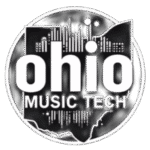When Reid Hoffman coined “blitzscaling,” the playbook was simple: hire fast, burn capital, and seize the market before rivals could react. The term “botscaling” describes the same hunger for speed but with a different resource: artificial intelligence rather than human headcount. In a botscaled venture, persistent AI co-founders, specialist agents, and multi-model workflows shoulder most of the execution, letting a handful of people—sometimes just one—drive meaningful revenue. The goal is ruthless revenue-per-employee optimization, achieved by mapping the jagged frontier of what AI can and cannot do and orchestrating these software colleagues accordingly.

How soon might this approach mint the first one-person “pegacorn”—a company topping $100 million in annual sales? The ingredients are falling into place: solo founders running seven-figure SaaS businesses with AI coders, and companies like Midjourney crossing nine figures with a small team. I suspect the primary barrier is no longer raw technological capability, but a dual challenge of orchestration and trust. A founder who goes down this path must become a “manager of bots,” adept at navigating AI’s unpredictable performance. This, in turn, builds the external trust required to rein in hallucinations, gate sensitive data, and persuade customers that a bot-heavy firm is as reliable as any traditional supplier. If these guardrails solidify, a single operator could plausibly clear the $100 million mark in the next few years, especially in pure-digital markets where marginal costs near zero. I admit this is quite an optimistic take, one that bets on the current blistering pace of innovation to smooth out AI’s limitations and solidify those necessary guardrails sooner rather than later.
The post Botscaling appeared first on Gradient Flow.


